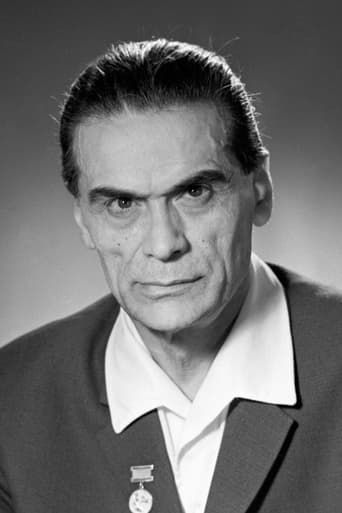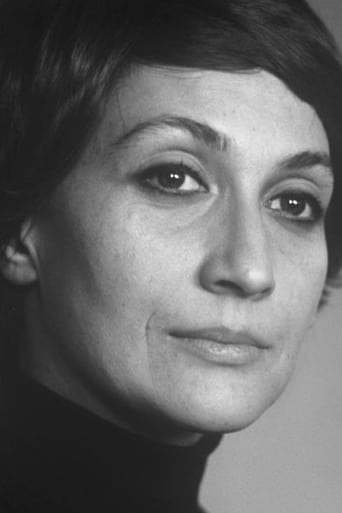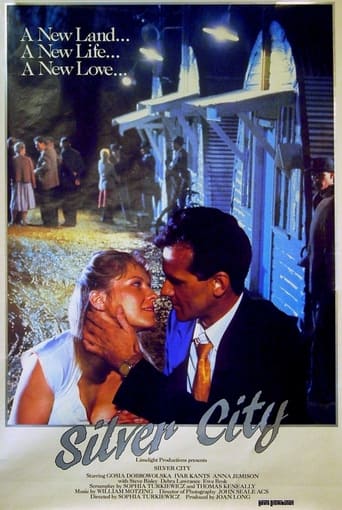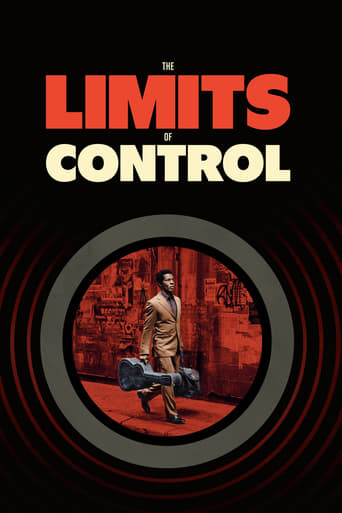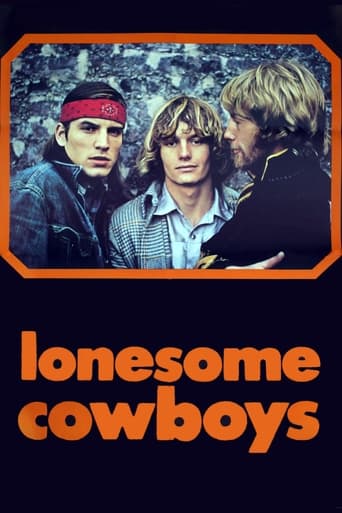
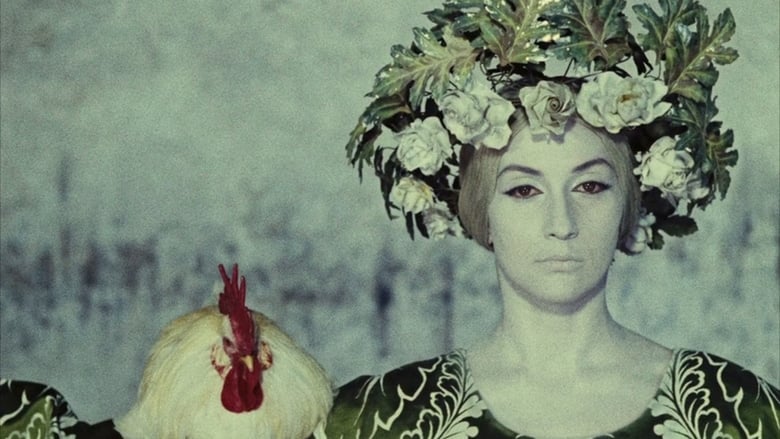
The Color of Pomegranates (1969)
The life of the revered 18th-century Armenian poet and musician Sayat-Nova. Portraying events in the life of the artist from childhood up to his death, the movie addresses in particular his relationships with women, including his muse. The production tells Sayat-Nova's dramatic story by using both his poems and largely still camerawork, creating a work hailed as revolutionary by Mikhail Vartanov.
Watch Trailer
Cast
Similar titles


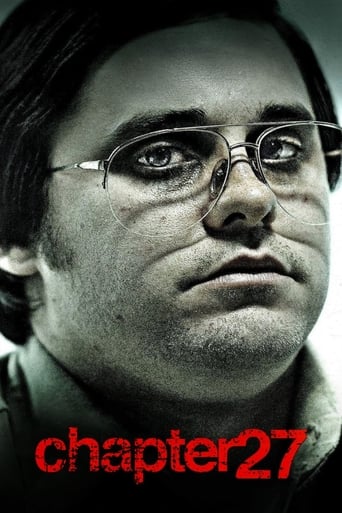
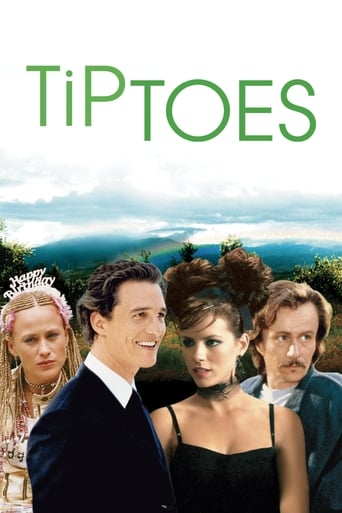
Reviews
People are voting emotionally.
Pretty good movie overall. First half was nothing special but it got better as it went along.
By the time the dramatic fireworks start popping off, each one feels earned.
The movie's neither hopeful in contrived ways, nor hopeless in different contrived ways. Somehow it manages to be wonderful
I found this incredible movie when I visited Johannesburg recently because it's impossible to find films like this in Durban. Parajanov creates a fascinating, one can say, almost an orgy of cultural detail in the highest art form. The details are what fascinated me, reminding me of Asia, perhaps with Turkish influence but also a strong Eastern European flavour. I must admit that I'm not educated about the culture of the regions in the former Russian states or countries near there. The media in South Africa hasn't shown us any of this so it was a completely new experience for me.The style Parajanov uses isn't a normal way of telling a story. It reminded me of how I used to look at old books of paintings from the East or even the Middle East. So, I have to congratulate the filmmaker on achieving something that is so rich in artistic detail, to a level I've never seen before. This got me curious to find more films by him. I found Shadows of Forgotten Ancestors and while it was a beautiful movie, it wasn't as brilliant as Sayat Nova. So, I highly recommend this film to anybody who loves art films and appreciate those from filmmakers such as Peter Greenaway. That's the closest example I can think of that has been shown on television in South Africa.
I was told that the film I was about to see was an unconventional biopic. Something abstract, and something that reflects on an entire culture and a man's life in a surrealist way. I am always interested in a challenge like this. I've seen many a biopic, and I know the clichés and conventions that wear them down. Hollywood is a biopic machine, and every year there seems to be a few of them that they churn out that are carbon copies of the last one that they did. The fact of the matter is, I wanted to be entertained and fascinated by "The Color of Pomegranates" by Sergei Parajanov, and yet, about 30 minutes through it, I started to look at my phone. For Art of any kind, this is not a good sign."The Color of Pomegranates" is an overbearingly pious, droning, surrealist snooze-fest. It's the cinematic equivalent of the album "Chant" by the Benedictine Monks. Supposedly, it was about the life of poet, songwriter and monk Sayat-Nova, but what I saw was just a long and tedious tribute to the Armenian Church. It seemed to me to be less about the man, and more about what surrounded him. I remember so much knitting, and chanting, and a giant flock of sheep. Oh, and chickens, lot of chickens. I don't get it. What do chickens have to do with the Armenian Church? Is it a big part of Armenian Culture? Do they eat a lot of chickens? Do they think it's a holy creature of some sort? All I know is, when Sayat-Nova dies, he's around dead chickens, and I really don't know why. Parajanov, it would be cool if you could explain what you mean by that, because you lost me. I understand the romanticism of the church, considering that Parajanov is clearly trying to wow us with his elaborate focus to the material, as it floods the screen. Every inch of the set is covered from head to toe in Armenian culture. The costumes are helmed from the finest Armenian fabric, and the sets tower of the actors, so much so that close-ups and cuts become entirely unnecessary, since the mis-en-scene is so extravagant that Parajanov allows his actors to simply walk around the frame as the camera stays still in one place. This becomes the overall aesthetic of the film. It's to appreciate the look of the classic Armenian life style. Unfortunately, It just didn't resonate with me. By the end, it seemed like Sayat-Nova turns into a Jesus Christ figure, and by that time, it occurred to me that I saw everything I needed. It's an allegory about the life of the Armenian Church, and the upbringing of Sayat-Nova seems to have been overbearingly catholic in many aspects, but it seems phony to compare him to Jesus. It seems fare to insisting of it's aesthetic to the audience, and after an hour of chanting and moaning, it's time to through in the towel for Parajanov. "The Color of Pomegranates" is the longest 80-minute film I've ever sat through. I know that it's a film that begs for appreciation as a great piece of art cinema. Maybe I'm just not bright enough to understand what it all meant. It was a polarizing experience, and not just for me, before the audience of my peers. Perhaps we are all Color blind to the genius of Parajanov. Or perhaps, we are more accustomed to the great narratives of the world that you have shown us already. Maybe this was just too much before Thanksgiving break. I'm not sure. All I know is, I am aware that there is an alternative Soviet Union cut of the film that is 5 minutes shorter. I never thought I'd say this, but.. Go, communism.
A true labour of love, this film is a meditation on the life of the Armenian poet who came to be known as Sayat-Nova (Persian for "King of Songs"). Since the film isn't intended as an authentic blow-by-blow account of Sayat-Nova's life, here is a quick rundown of his life: born in Tbilisi in Georgia in 1712, Sayat-Nova acquired skills in writing poetry, singing and playing at least three types of stringed musical instrument. He entered the court of King Irakly II of Georgia as both full-time professional poet and diplomat and in his capacity as a diplomat helped forge an alliance of Georgia, Armenia and Shirvan (a former state now part of Azerbaijan) against Persia. Sayat-Nova was expelled from the court for falling in love with his employer's daughter and became a wandering troubadour. He entered the priesthood in 1759 and served in various monasteries, dying in Haghpat monastery in northern Armenia in 1795 when a foreign army invaded the building and killed the monks inside.The film follows Sayat-Nova's inner life and impressions of the world around him based on his poetry and songs. The structure of the narrative is straightforward and organised into chronological episodes starting with the poet's childhood and youth and continuing into his time at the royal court and later entry into monastic life. Each episode of Sayat-Nova's outer and inner life is an opportunity for director Parajanov to highlight the culture, music and society of the poet's time: to take one example, the poet's childhood becomes a device to emphasise the importance of learning, education and religious study in Armenian society at the time. Scenes of the young Sayat-Nova surrounded by open books on roof-tops stress the value of books and their preservation. When the young budding poet is tired of studying books, he hangs around wool-dyers and the bath-house and again various tableaux show the dyers at work. boiling pots of dye and drenching wool into them, and various men relaxing and being scrubbed in the bath-house. These and all other tableaux of 18th-century Armenian life and culture in the film are often symbolic in ways that may be religious or hint at something darker. Viewers are invited to wonder at the richness and complexity of the culture and values inherent in these scenes and to meditate on what meanings, personal or otherwise, may exist within. Magic may be found and for some viewers the past itself may come alive with personal messages for them and them alone.For this viewer at least the music soundtrack itself is amazing: it has many Middle Eastern influences, Christian choral elements and there are even hints of musique concrète: in one scene, men are working on part of a church with chisels and the noise they make is incorporated into the soundtrack rhythm. The film suggests a link between one musical instrument that Sayat-Nova plays and his sexual desire: in one scene the poet traces spirals around the body of a lute as if tracing spirals around a conch (already established as a sensual symbol of the female body). The implication is that much of Sayat-Nova's poetry and music was inspired by personal lust and desire translated into inspiration. As though to drive the point home, the film provides an actual lust object of a muse played by Georgian actor Sofiko Chiaureli who handles five different roles in the film including the poet himself as a teenager. The very fact of a woman with flawless features playing an adolescent boy introduces a homo-eroticism into the movie which among other things got Parajanov in trouble with the Soviet government. Chiaureli and the other actors speak no dialogue and perform minimal actions with expressions that are either blank or at least gentle, kindly and serene. In maintaining a steady, calm composure throughout their scenes, not giving the least hint of injecting their own thoughts, feelings and misgivings into what they are doing, the actors demonstrate their skill.Apart from necessary scene breaks there isn't much editing and the camera rarely moves so each scene has a painterly quality and is a diorama of moving characters who appear two-dimensional in the way they may move from side to side. Close-ups of actors playing Sayat-Nova and those who influenced his work portray them as if they are religious icons.For Western viewers the first half of the film is of more interest in showing more of the traditional folk culture and values of the Armenians and the pace is steady though not fast; the second half of the film which deals with Sayat-Nova's inner life much more, with his dream and contemplation of death, is slower and more esoteric. As the poet revisits his childhood in parts, some scenes may confuse viewers with the sudden appearances of the same child actor who played Sayat-Nova early in the film. The last two episodes appear redundant as they revolve around death. In the second half of the movie also, there is a sense of aloneness and alienation: Sayat-Nova appears to be at odds with the monks in the monastery at times and doesn't participate in the monks' communal activities. At one point in the narrative, he even leaves the monastery to go and work among the common people. It is possible that Parajanov was projecting something of his own life and experiences in the "life" of Sayat-Nova as it plays out here.
How much do you know about foreign culture? One interesting thing about world cinema is that it forces a milky white, middle-class American (like myself) to venture into the cultures of many different people. As much as I would like to say that I always enjoy that aspect of film, some films have the ability to turn even the most liberal film critic into a blatant xenophobe. For me, one of those films is The Color of Pomegranates. A Russian film directed by Sergei Parajanov, this has to be one of the least pleasant and most pretentious experiences of my life. I will say, in my introductory paragraph, that I would not recommend this snooze-fest to my worst enemy.The Color of Pomegranates is a film that only arguably tells a story. I have read that it supposedly created a cinematic language through striking visuals and material symbolism. And though I am sure that this really happened, I cannot say that I noticed any of it. The concept that Parajanov based his film around was to tell the life story of the Armenian poet, Sayat Nova (King of Song), using non-literal and poetic imagery that more closely represents his art over his actual life. This means that the entire film is relatively without dialogue and features some excruciatingly pretentious still shots. In fact, the camera hardly moves throughout the entire production. It is just a jumble of long shots that lack any solid continuity.One thing that I forced myself to remember is that I have seen this type of film before. I was automatically brought back to the surrealist movement of the late 20's and 30's with Louis Buñuel and Salvador Dali, but I think that this association would offend Sergei Parajanov. He was not making a surreal film; rather he was trying his best to tell a story through symbols and gestures. The fact that there is supposedly a story hidden in there keeps The Color of Pomegranates from being a surrealist picture.So then what is this film really? There have been several filmmakers who try and tell an artist's story through works rather than facts, and I have never been much of a fan. Though the comparison is thin, one film that succeeds with the endeavor is Fur: An Imaginary Portrait of Diane Arbus (2006), which narrates the life of the famous photographer using her influences as a visual. But still, Fur is a film that stays within the boundaries of convention. Parajanov is not interested in conventional anything.I suppose what you are reading is an American boy's yearning for a more Hollywood-like structure in his entertainment, and I will admit that it embarrasses me to write that. But The Color of Pomegranates is simply a painfully boring film. I may be uncultured, but I was also horribly uninterested in this dribble. We are treated to the visual of men slaughtering goats, one exposed female breast, a man riding a horse, people shooting guns and (of course) the leaking of pomegranates; which represents blood – the essence of life. Deep right? This is the part where my fellow cinophiles tell me that I do not "understand" what Parajanov is trying to tell me with The Color of Pomegranates. I assure you that the obvious religious imagery, worked in coming-of-age angst and the allusion to VERY old poetry was not lost on me. I guess I just do not have an invested interest in the culture. I am certainly not interested enough for something like this movie.At the end of the day, I want to be entertained by a film. The Color of Pomegranates can boast some beautiful scenery, but it lacks even the most basic values that interest a consumer. I have a hard time believing that there are people in the world who could legitimately enjoy something like this, but there has always been a market for the pretentious. The symbolism is ineffective and the story is lost in the fray of nonsense. I hated every minute of this film. It was an awful, boring and eye-opening experience. I gotta get out of the house more ..
